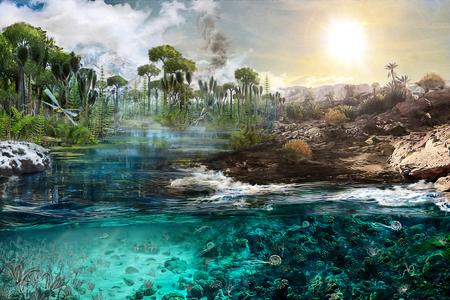When Jurassic Park roared its way into cinemas in 1993, it didn’t just leave a lasting impression on a whole generation of researchers; it sparked a new generation of dinophiles as well. Arguably, the special effects are just as impressive now as they were back then, and the popular fascination with bringing dinosaurs – and other extinct animals, for that matter – back to life seems undimmed.
The premise of the film was that a fossil of an ancient blood-sucking mosquito containing preserved dinosaur blood had been found intact in a piece of amber. Then, using frog DNA, researchers had been able to patch the recovered fragments of dinosaur DNA in order to clone giant reptiles. Although the idea sounded intriguing, there were three main scientific objections to it – aside from the fact that the proverbial Jurassic Park contained dinosaurs that did not live in the Jurassic Period, such as Tyrannosaurus rex.
First, the DNA and blood of dinosaurs from the Mesozoic Era (which includes the Jurassic Period) would have decayed into very small fragments; second, there was no known biting insect from the Jurassic Period, let alone Jurassic amber containing one; and third, there was no known Jurassic amber.
'Were' is the operative word here. An international team of scientists, including some from the Slovak Academy of Sciences (SAV), have shown that the latter two objections have now been overcome. Their paper was published in the prestigious National Science Review journal. Still, don't expect to see dinosaurs roaming the Earth again any time soon.

To stay up to date with what scientists in Slovakia or Slovak scientists around the world are doing, subscribe to the Slovak Science newsletter, which will be sent to readers free of charge four times a year.
When a joke backfires
In 2009, an amber outcrop was found near the village of Aintourine in Lebanon. Generally, amber is fossilised tree resin that is known for its yellow-orange-brown colour. It is capable of preserving parts of organisms or plants that wouldn’t otherwise fossilise.
According to Slovak palaeontologist Peter Vršanský, from the SAV's Earth Science Institute, who led the team, everything started as a joke.
"When I sent then student Hemen Sendi [a co-author of the paper – Ed. note] from the Netherlands on his first trip to Lebanon in 2016, I made a joke at his expense and told him to bring back Jurassic amber, which was not yet known [to exist] at that time. When he returned, the joke was on me – he brought back a piece," Vršanský told the Slovak Spectator.



 Palaeontologist Peter Vršanský (source: Archive of P. V.)
Palaeontologist Peter Vršanský (source: Archive of P. V.)